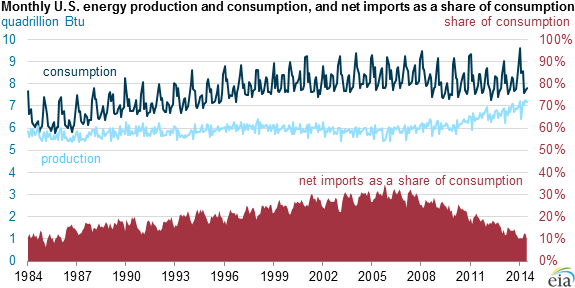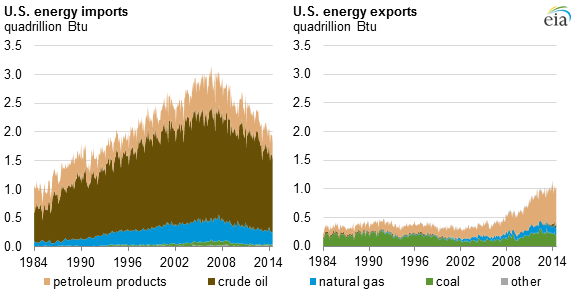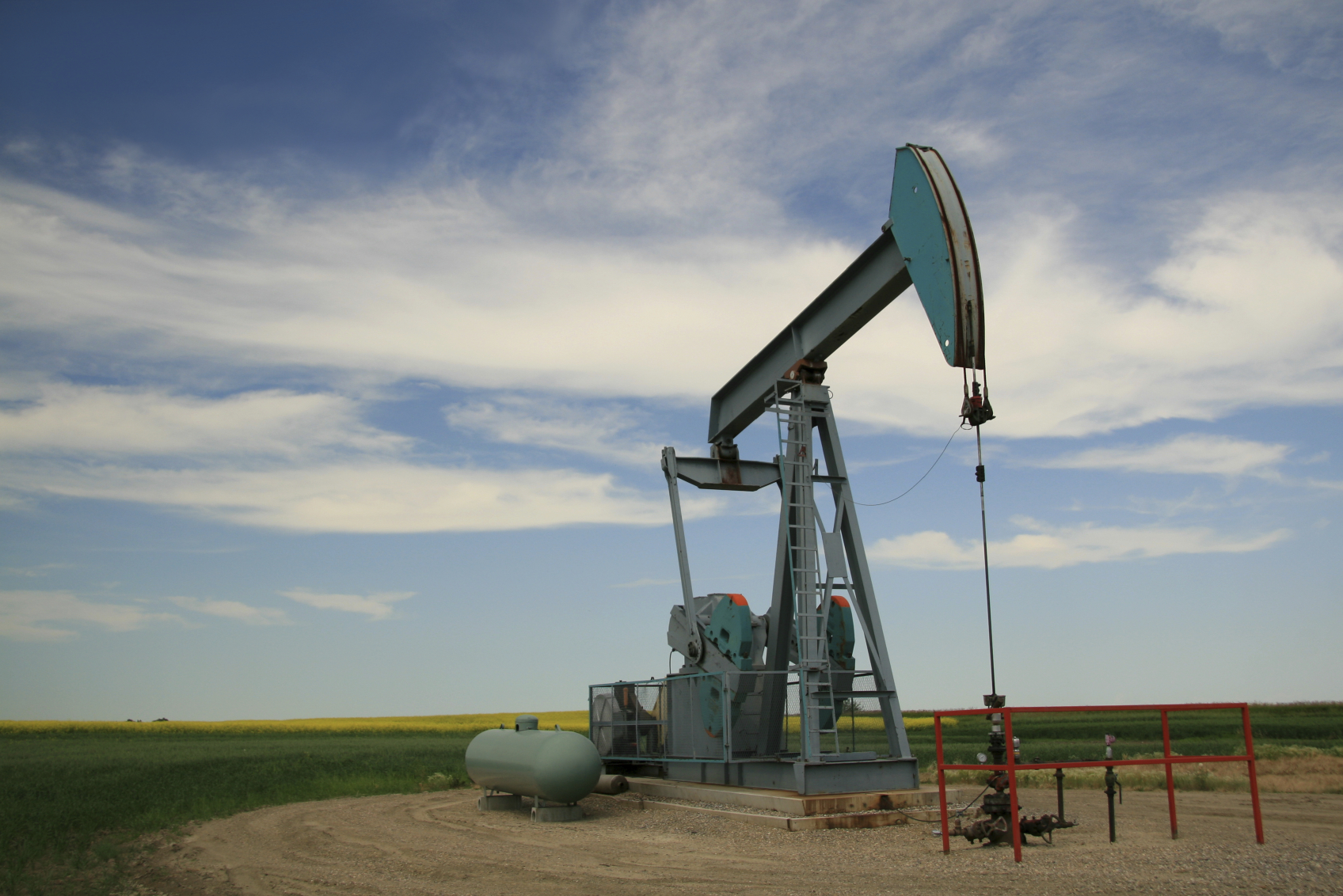As the United States slowly emerges from the economic downturn of the Great Recession, pockets of the country have enjoyed a much faster recovery thanks to development of shale oil and natural gas resources.
For example, cities west of the Mississippi River have boomed in population and economic growth due to increased energy production in oil- and gas-rich areas of the Great Plains and Mountain West, according an Associated Press report based on new U.S. Census data.
The same data confirm that energy production is one of the fastest-growing industries and an engine for economic growth in the United States. Generally, in locations where energy development occurs, economic opportunity arises and towns and states thrive.
However, economic opportunity has not been limited to just those production areas. The shale boom has also helped American families across the nation through indirect job and economic growth, lower energy costs and higher incomes. In fact, IHS Global Insight estimates that the domestic oil and gas boom created the equivalent of $1,200 of real disposable household income to American families in 2013.
Resources Fuel Our Economy
As the shale energy revolution continues to impact the nation, we are reminded of how energy development is closely correlated to economic activity. In fact, the former House Resources Committee Chairman Richard Pombo (R-CA) said during a hearing in 2006, “The fact is, resources fuel our economy...they are the building blocks of our society. Without them, we produce nothing.”
As Charles Mann noted in his recent The Atlantic article, economic growth and energy use go hand in hand: “According to the National Bureau of Economic Research, the United States has experienced 11 recessions since the end of the Second World War. All but one were associated with spikes in energy costs—specifically, abrupt jumps in the price of oil.”
This strong connection between energy development and economic growth is even more evident when examining economic figures stemming from the U.S. shale boom. According to the consulting and forecasting firm IHS Global Insight, shale development has supported more than two million American jobs and generated $75 billion in federal and state tax revenues. By 2020, IHS estimates, total jobs linked to shale will grow to 3.3 million, and the total impact on U.S. gross domestic product will be nearly half a trillion dollars.
According to energy expert and Vice Chairman of IHS Global Insight, “Shale gas has created hundreds and hundreds and hundreds of thousands of jobs in the last five years in the United States. It's brought $1 billion of revenue into the state government of Pennsylvania…"It does have a transformative impact."
But the economic development doesn’t end there. The boom in domestic natural gas production has pushed down utility prices for customers and bolstered energy-intensive manufacturing, particularly steel, chemical and plastics producers.
Where specifically are we seeing the firsthand positive impacts of the shale boom? Let’s take a look at a few examples from across the U.S.
The Bakken Shale formation covers Eastern Montana, Western North Dakota, and parts of Saskatchewan and Manitoba in the Williston Basin.
North Dakota
North Dakota’s shale energy boom has produced a parallel ripple effect in income, employment and population. The U.S. Bureau of Economic Analysis reported this week that North Dakota’s personal income level grew 7.6 percent in 2013 – the highest among all states for the sixth time in the last seven years.
The report noted the state’s growth is connected in great part to its energy development, the epicenter of which is the Bakken shale formation. Its riches have transformed North Dakota into the second largest oil-producing state in the U.S. after Texas in volume of oil produced, according to the EIA.
The Marcellus Shale formation stretches across western New York, Western Pennsylvania and all of West Virginia, and is the largest shale formation in the world in terms of oil and gas input.
Pennsylvania
Stretching across nearly two-thirds of Pennsylvania, the Marcellus Shale formation has provided significant economic benefits such as lower utility bills, new jobs, economic growth and new opportunity for the state. According to economic reports published by Consumer Energy Alliance over the past two years, a number of Pennsylvania counties have directly seen economic development stemming from production in the Western and Northeast parts of the state.
Marcellus Shale natural gas drilling has been ongoing in Bradford County since 2008, increasing by 20 percent and attracting national and international investment in the area. The state Dept. of Labor & Industry reported in 2010 that Bradford County experienced the highest increase in employment in any county in the entire state. Shale gas development has reduced unemployment and revitalized businesses and real estate in Bradford County.
The rolling countryside of western Pennsylvania just north of Pittsburgh envelops the abundant Marcellus shale formation whose natural gas development is revitalizing the county’s economy. In late 2012, shale gas revenue channeled $4.3 million to Butler and neighboring counties. In first quarter 2013, Butler County ranked in the top 50 counties in the nation for wage growth, according to the U.S. Bureau for Labor Statistics. Shell Chemical’s plan to build a multi-billion dollar ethane cracker plant in nearby Beaver County is expected to endow the region with additional business growth.
As one of the most active Marcellus natural gas production areas, Washington County has attracted national and international investment in the area. An increase in population and demand has brought a business boom for the service, transportation and tourism fields. Shale gas development in Washington County has helped to lower unemployment, boost average earnings and increase business growth outside the energy market.
The Green River Formation in Colorado, Wyoming, and Utah holds the world’s largest oil shale deposit. The Niobrara Formation’s most productive zones are in the Denver-Julesberg basin of northeast Colorado and southeastern Wyoming.
Colorado
Colorado promises to be an emerging locale for prosperous shale development, as companies are increasing their footprints and adding more jobs to the region. The U.S. Department of Energy estimates that 80 percent of recoverable oil shale in the Green River Formation is located in Piceance Basin in northwestern Colorado. The largest energy-producing county in Colorado is Wattenberg Field, located in the Niobrara Shale Formation in the Denver Basin.
The natural gas and oil riches of the Niobrara and Green River formations are sparking many job opportunities. Colorado’s energy industry employs 110,000 people and contributes $29.5 billion in economic activity. The Colorado School of Mines saw increased enrollment in its Petroleum Engineering Program from 30 to 200 in 10 years. Some two-thirds of the school’s graduates, no matter their major, work for oil and gas companies upon graduation with an average starting salary of about $90,000 a year.
A Bright U.S. Energy Future is on the Horizon
With the Energy Information Agency (EIA) forecasting that U.S. crude oil production will approach a record by 2016 and natural gas production will increase 56% between 2012 and 2040, it’s clear that tremendous opportunity for the nation lies ahead.
Through the availability of abundant energy resources across the nation and new energy production technologies, energy will continue to fuel the U.S. economy for years to come. But that opportunity will only remain on the horizon if the U.S. continues to promote access to these resources. Whether it is oil and gas, coal, wind, solar, and other renewables, there must be both access to the resources and reasonable regulation, as well as a focus on producing energy in a way that is responsible and acceptable to the public. By following this path, the United States will remain a leader in energy and economic prosperity for years to come.
Kristin Schrader Marcell is former House Resources Committee staff member and political appointee for the U.S. Department of Transportation. She is a public affairs consultant that focuses on the energy and transportation industries.




 Total U.S. net imports of energy as a share of energy consumption fell to their lowest level in 29 years for the first six months of 2014. Total energy consumption in the first six months of 2014 was 3% above consumption during the first six months of 2013, but consumption growth was outpaced by increases in total energy production. These changes led to a 17% reduction in net imports compared with the first six months of 2013.
Total U.S. net imports of energy as a share of energy consumption fell to their lowest level in 29 years for the first six months of 2014. Total energy consumption in the first six months of 2014 was 3% above consumption during the first six months of 2013, but consumption growth was outpaced by increases in total energy production. These changes led to a 17% reduction in net imports compared with the first six months of 2013.



